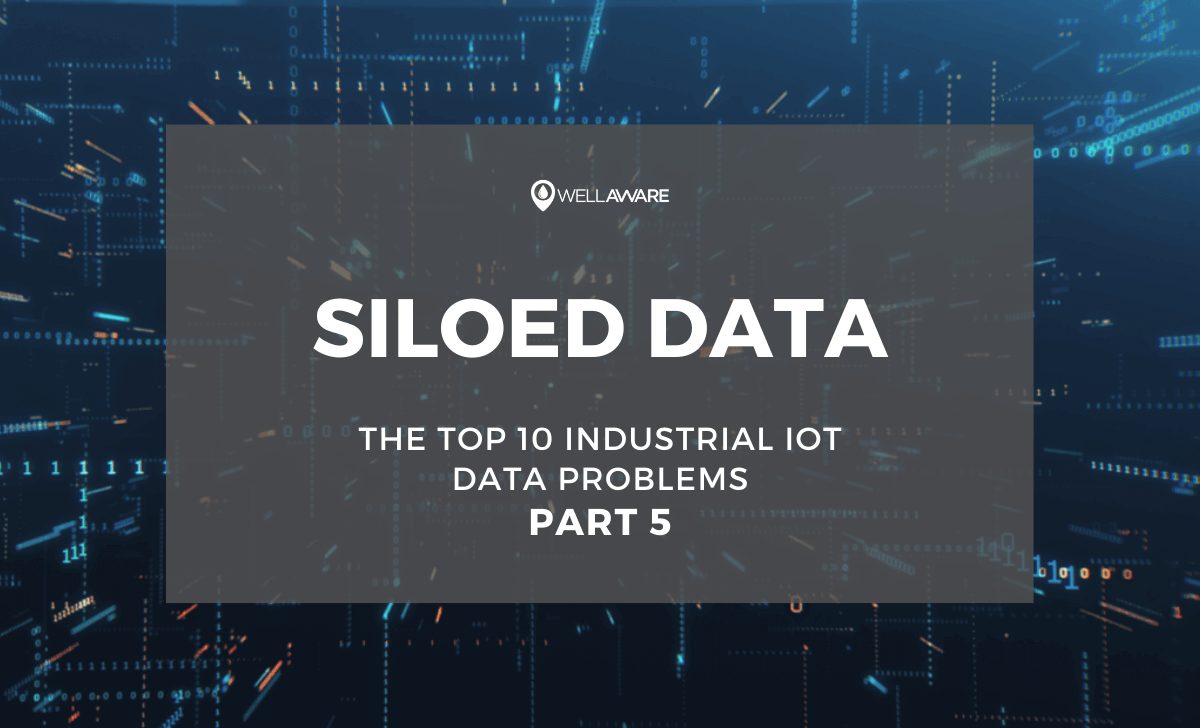In the industrial space, data silos are everywhere.
Many industrial companies today still rely on cumbersome data management systems that render operations data inaccessible to those who need it most.
In other words, the data is “siloed”.
Siloed data is a major problem for organizations that are trying to take advantage of digital transformation. Before deploying smart devices to track remote assets, leaders must ensure that data can flow freely between departments, teams, and offices. Otherwise, field intelligence is useless, or it requires too much time and energy to process.
Only recently have cloud computing and LPWAN protocols enabled businesses to gather information at scale from remote assets. The challenge now lies in optimizing data management practices to take advantage of these technologies and eliminate data silos.
What causes siloed data?
Decades ago, and often still today, SCADA systems are the method of choice for industrial companies to collect operations data. Most organizations use localized and centralized systems for managing data access, which has led to the siloed data challenges that still plague these businesses today.
Field offices frequently store data on in-house, air-gapped servers. These servers are isolated from the outside world and don’t connect to the internet, which is critical for modern IoT deployments consisting of hundreds or thousands of assets.
Pulling data out of local servers is costly and time-consuming. Analysts either have to physically visit field offices to obtain data or establish secure connections to local servers to replicate field data on corporate systems.
Neither solution is ideal, as the former is expensive, and the latter creates version control issues. Sending office-based personnel to field sites for data pulls is not a sustainable use of human capital. Additionally, maintaining two independent databases that reflect the same information can lead to inconsistent intel about industrial performance.
Centralizing data access and permissions comes with its own unique siloed data challenges. Companies that follow this approach must invest in robust security protocols and infrastructure. Leaders can’t risk putting all operations data in one place without the right digital protections. Organizations with centralized data must maintain bloated IT departments, as they have to designate individuals or teams to manage access controls. Whenever corporate personnel require operational data, they have to go through slow, IT-run credentialing processes. As a result, centralization often leads to latency issues.
Who is affected by siloed data?
Those most affected by the siloed data problem are data aggregators and analysts.
When data is hard to access or spread across multiple locations, there is so much work that has to go in on the front end before field intelligence is useful. Analysts have to spend significant time obtaining field data before they can even synthesize it. And the burden only gets heavier the more data silos you add to the equation.
The repercussions of siloed data also cascade up the leadership chain. Executives who want to make decisions based on real-time information have to wait for their teams to overcome data silos created by outdated processes. Or, they have to completely revamp their data management approaches to unclog important data pipelines.
What do we need to consider?
There are several additional challenges related to the data silo problem.
First, field workers may not be motivated to help address data silos, as their responsibilities end with their local servers. They have no incentive to facilitate data synthesis or solve aggregation challenges because doing so doesn’t help them perform their jobs more effectively. It can be difficult for leaders to implement new processes or data management strategies without buy-in from the field.
Secondly, even if companies can alleviate infrastructure-based silos, there may be integration problems depending on the specific analytics engine, software tools, or cloud platform in use. Data may also require more processing if it’s inconsistently maintained across field offices. Reconciling differences in structure, naming conventions, hierarchies, and more drains internal resources and detracts from the overall ROI of digital initiatives.
What’s at stake for your business?
To evaluate whether or not your business has a siloed data issue, consider the following:
- How is field data collected and stored today?
- Is your data management process scalable to include new acquisitions or asset expansion?
- Can the people and teams who need field data get it whenever they need it?
- If not, who controls access to the information?
- How much would it cost to free up data flows across department and office lines?
WellAware helps industrial companies overcome many types of industrial IoT data challenges. With respect to the siloed data problem, we have extensive experience helping organizations overcome legacy data management processes and optimize IIoT deployments over the long term.
Interested in speaking with one of our industrial IoT experts?

